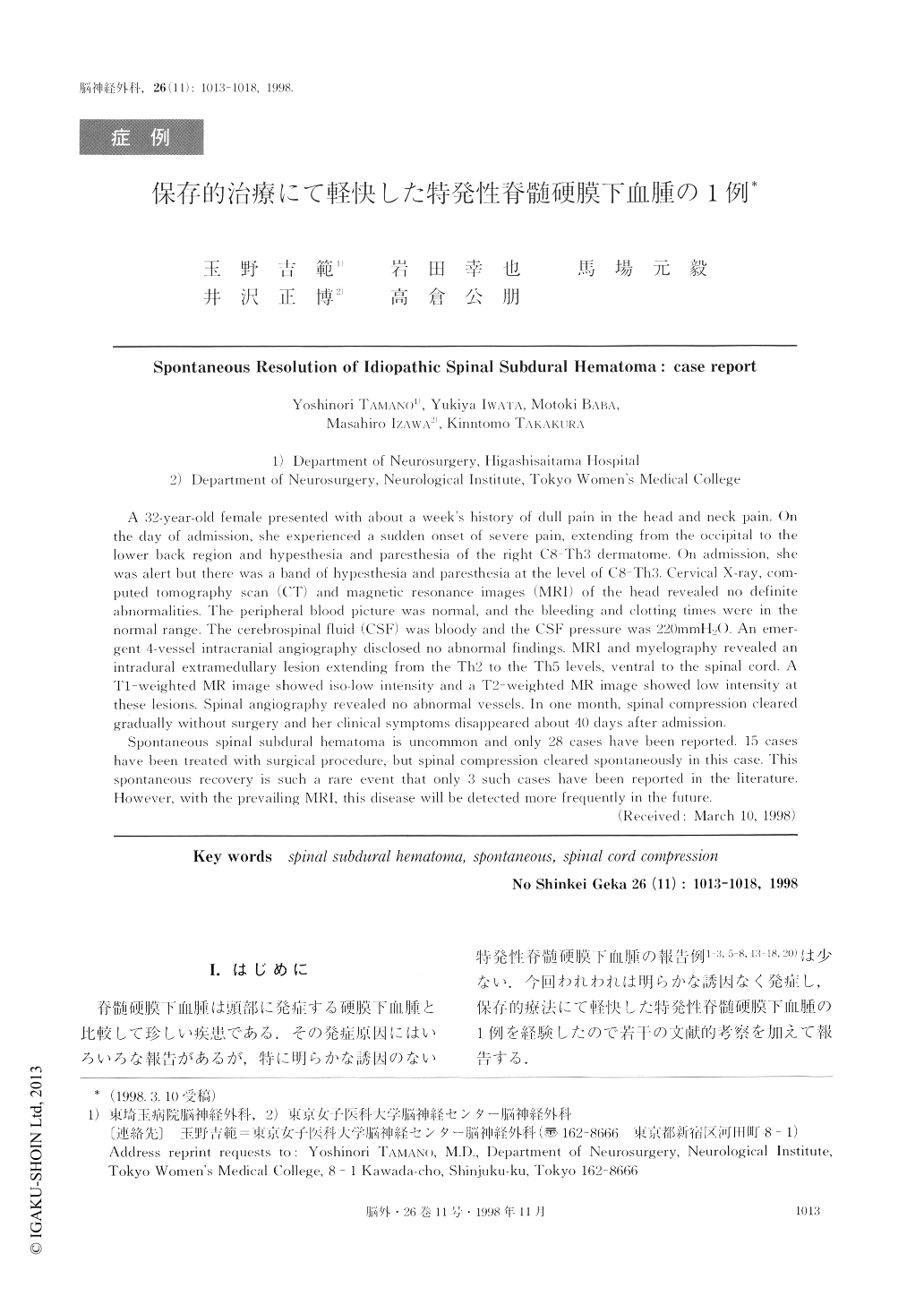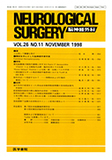Japanese
English
- 有料閲覧
- Abstract 文献概要
- 1ページ目 Look Inside
I.はじめに
脊髄硬膜下血腫は頭部に発症する硬膜下血腫と比較して珍しい疾患である.その発症原因にはいろいろな報告があるが,特に明らかな誘因のない特発性脊髄硬膜下血種の報告例1-3,5-8,13-18,20)は少ない.今回われわれは明らかな誘因なく発症し,保存的療法にて軽快した特発性脊髄硬膜下血腫の1例を経験したので若干の文献的考察を加えて報告する.
A 32-year-old female presented with about a week's history of dull pain in the head and neck pain. On the day of admission, she experienced a sudden onset of severe pain, extending from the occipital to the lower back region and hypesthesia and paresthesia of the right C8-Th3 dermatome. On admission, she was alert but there was a band of hypesthesia and paresthesia at the level of C8-Th3. Cervical X-ray, com-puted tomography scan (CT) and magnetic resonance images (MRI) of the head revealed no definite abnormalities. The peripheral blood picture was normal, and the bleeding and clotting times were in the normal range. The cerebrospinal fluid (CSF) was bloody and the CSF pressure was 220mmH2O. An emer-gent 4-vessel intracranial angiography disclosed no abnormal findings. MRI and myelography revealed an intradural extramedullary lesion extending from the Th2 to the Th5 levels, ventral to the spinal cord. A T1-weighted MR image showed iso-low intensity and a T2-weighted MR image showed low intensity at these lesions. Spinal angiography revealed no abnormal vessels. In one month, spinal compression cleared gradually without surgery and her clinical symptoms disappeared about 40 days after admission.Spontaneous spinal subdural hematoma is uncommon and only 28 cases have been reported. 15 cases have been treated with surgical procedure, but spinal compression cleared spontaneously in this case. This spontaneous recovery is such a rare event that only 3 such cases have been reported in the literature. However, with the prevailing MRI, this disease win be detected more frequently in the future.

Copyright © 1998, Igaku-Shoin Ltd. All rights reserved.


